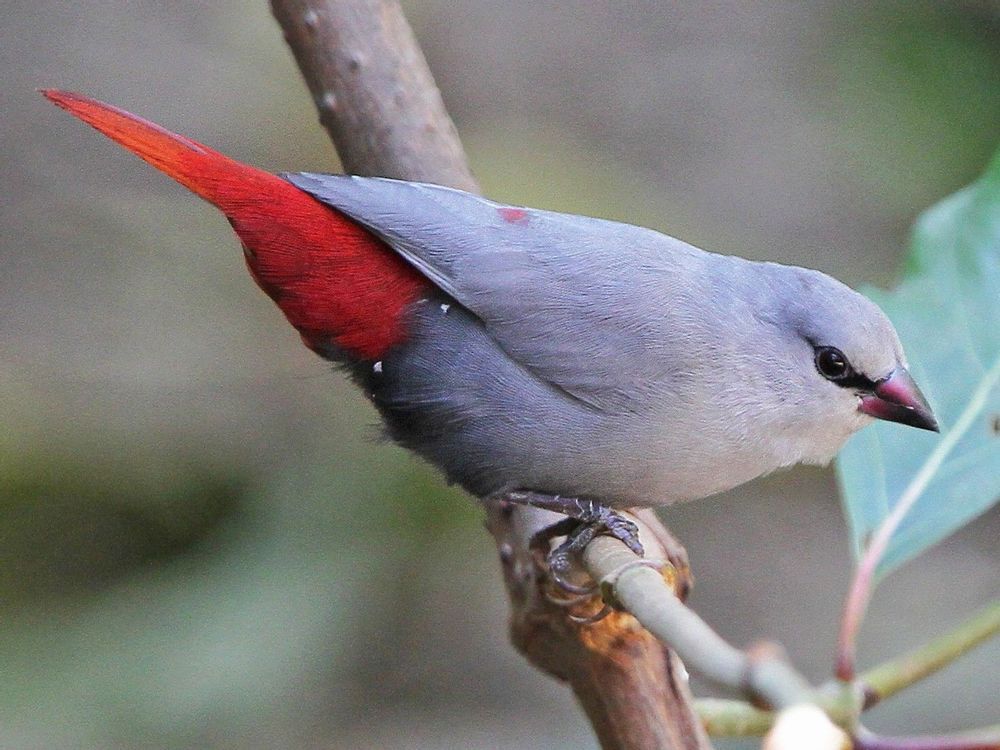Lavender waxbill
Glaucestrilda caerulescens
ORDER
Passeriformes
FAMILY
Pycnonotidae
GENIUS
Pycnonotus
2690
Observations
1900
Photos
26
Recordings
06
Videos

Description
A tiny gray finch with a red tail and rump and a purplish bill. Male is bright silvery-gray all over with a pale throat and chest. Female is similar, but has darker underparts. Sometimes joins flocks with other small finches. Inhabits thickets in open areas such as hillsides and field edges. Call is a high, thin “see”, often given in series. Native to western Africa; introduced to Hawaii island, where it inhabits brushy and grassy areas.
Distribution
The bird is originally found in lowland areas of dry shrub land across much of central Africa from Benin, Cameroon and Ghana to Niger, Sudan and Chad. It has even been introduced to the Hawaiian Islands where a population is doing well. Generally, the species is listed as one of ‘least concern’ by the IUCN for its conservation status – this means populations in the wild are healthy and not under serious threat. There are also subspecies across the range that have slight differences in appearances. Generally, these birds have a lavender-grey body colour with a dark crimson and black bead, black eye markings and a few white spots on the flank. Their rump, tail and undertail coverts are bright crimson red and they have black-brown feet and legs. Sexing is tricky with the hens being slightly smaller and having slightly paler shading on the belly but the only definitive way to sex is that cock’s sing and hens don’t. They are typically around 4 to 4.5 inches in length and weight around 9-10 grams.
Habitat
It is found in subtropical/tropical (lowland) dry shrubland habitats in Benin, Burkina Faso, Cameroon, Central African Republic, Chad, Côte d'Ivoire, Gambia, Ghana, Guinea, Guinea-Bissau, Liberia, Mali, Niger, Nigeria, Senegal, Sudan, Togo and the United States (Hawaii island only). The IUCN has classified the species as being of least concern.
Feeding
In terms of nutrition Lavender Waxbills are the perfect mate for creative chefs – nearly no other Waxbill has such a broad diet. Most species are happy with a diet consisting of a good standard seed mixture for waxbills and some mealworms, but Lavender Waxbills are gourmets. They happily go for the five course menu with a seed-mixture consisting of small millet and grass-seeds, insects mixed with egg food, half ripe-seeds, greens, a little bit of sweet fruits and as desert some dry-nectar. They are really not complicated birds and usually accept new food without too much hesitation, but they depend on a certain amount of variation in their diet. Luckily their curiosity helps them to accept new food quite quickly.
Breeding
Introducing two unpaired Lavender Waxbills to each other often results in chasing and aggression, even if the birds are of the opposite sex. Furthermore, introducing two birds of the same sex may result in violent fighting and injury, so always keep a close eye on this species when introducing them to each other. Nest inspection - first pair to nest were totally tolerant.
Threats
his species has a very large range, and hence does not approach the thresholds for Vulnerable under the range size criterion (extent of occurrence <20,000 km2 combined with a declining or fluctuating range size, habitat extent/quality, or population size and a small number of locations or severe fragmentation). The population trend appears to be stable, and hence the species does not approach the thresholds for Vulnerable under the population trend criterion (>30% decline over ten years or three generations). The population size has not been quantified, but it is not believed to approach the thresholds for Vulnerable under the population size criterion (<10,000 mature individuals with a continuing decline estimated to be >10% in ten years or three generations, or with a specified population structure). For these reasons the species is evaluated as Least Concern.
References
BirdLife International. 2018. Estrilda coerulescens. The IUCN Red List of Threatened Species 2018: e.T22719518A131994177. https://dx.doi.org/10.2305/IUCN.UK.2018-2.RLTS.T22719518A131994177.en. Downloaded on 21 January 2021.